
TARGET 161005
DERINKUYU
THE UNDERGROUND CITY

In 1963, an inhabitant of Derinkuyu (in the region of Capadocia, central Anatolia, Turkey), while demolishing a wall of his house-cave, was astonished to discover that behind there was a mysterious room behind the wall that he had never seen; this room led to another one, and this one to another one and another one. By chance the underground city of Derinkuyu was there, whose first level that was probably excavated by Hittites around year 1400 a.C.
Archaeologists began to study this fascinating underground city. They were able to explore down to 40 meters (131 feet), although one thinks that it has a lowest level at around 85 meters (279 feet).
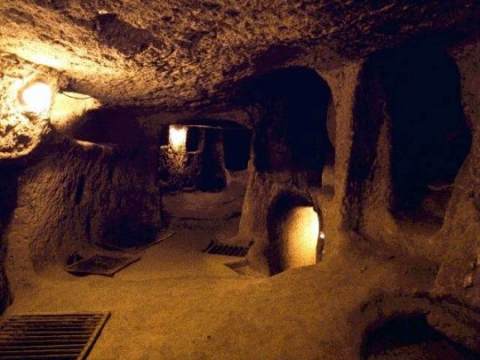
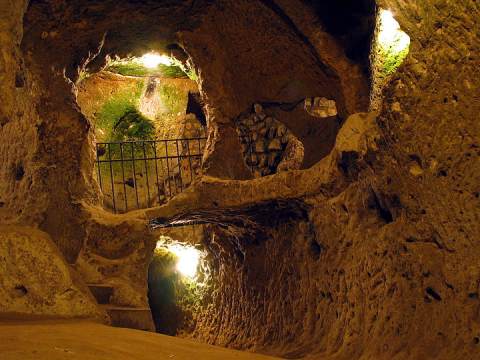
At present 20 underground levels have been opened. Only the eight upper levels can be visited; the others are partially obstructed or reserved to access by the archaeologists and anthropologists who study Derinkuyu.
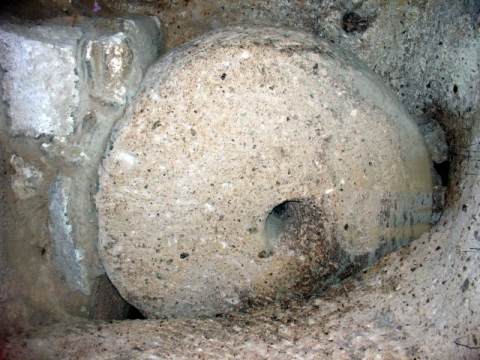

In the image above, the circular stone door closes a corridor which isolated the inhabitants. The stone doors were from 1 to 1.5 meters (3 to 5 feet) in height, about 50 centimeters (9 inches) thick, and weighed 500 Kilos (1102 pounds)
The city was used like refuge by thousands of people who lived in the subsoil to protect themselves from the frequent invasions that Capadocia underwent at the diverse times of their occupation, and also by the first Christians.
The enemies, conscious of the danger of invading the underground city generally tried to kill them off by poisoning wells above ground.
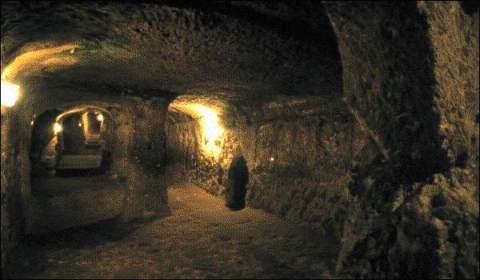
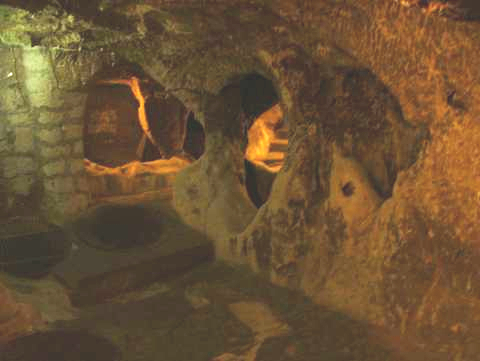
The interior is amazing: the underground galleries of Derinkuyu (in which there is space for, at least, 10,000 people) could be blocked in three strategically important points by moving the circular stone doors over the entrances. These heavy rocks that closed the corridor prevented the entrance of enemies.
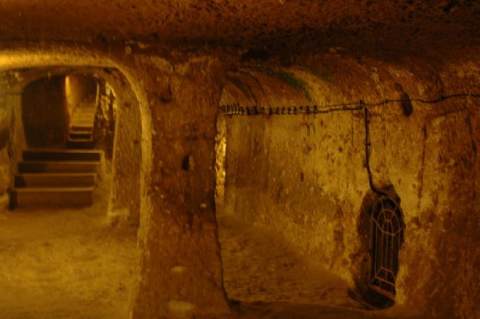
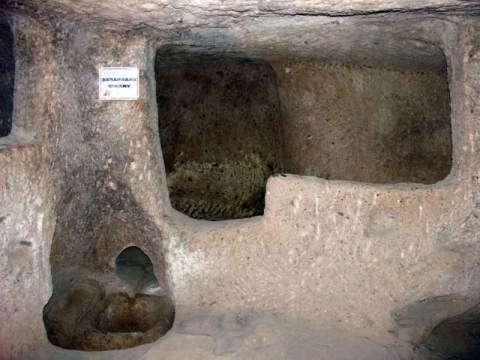
In addition, Derinkuyu has a tunnel of almost 8 kilometers (4.9 miles) in length that leads to another underground city, Capadocia, Kaymakli.
The Greek historian Jenofonte spoke of the underground cities of this zone. In his work, "Anabasis", he explained that the people who lived in Anatolia had excavated their houses under earth and lived sufficiently in great lodgings fit for their families, their domestic animals and the food provisions that they stored.
In the reclaimed levels, archiologists have found stables, dining rooms, a church of cruciform design of 20 by 9 meters (30x65 feet) with a ceiling of more than three meters (10 feet) in height, kitchens still blackened by the soot of cooking fires, presses for the wine and the oil, warehouses, stores for food, a school, numerous rooms and, even, a bar.
The city benefitted from the existence of an underground river; it had water wells into that river, so the poisoning of the wells above the surface did not affect them, and a magnificent exhaust fan with 52 ventilation openings found so far. Present day engineers are astonished at the ability of these people who, in ancient times were able to accomplish such a feat of engineering.
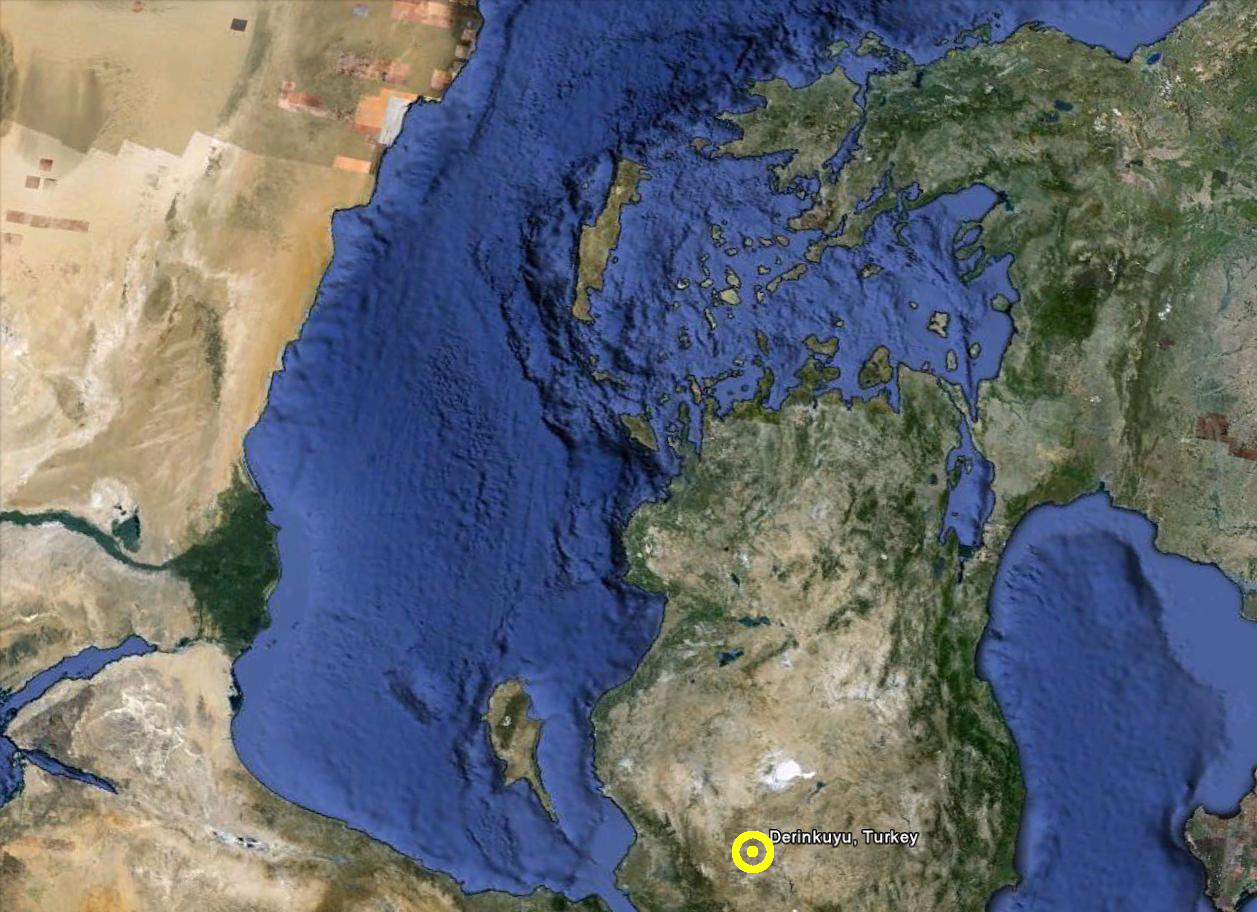
If you got impressions for which this feedback is insufficient, more information,
pictures and videos can be found at the following web sites:
Wikipedia
Sometimes Interesting web site
The Epoch Times web site
Ancient Code web site
15 things you should know about Derinkuyu
Many thanks to Ray McClure for finding and programming this target.